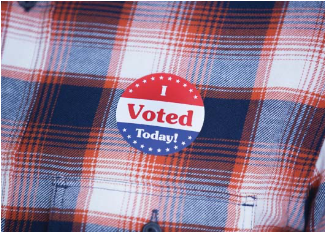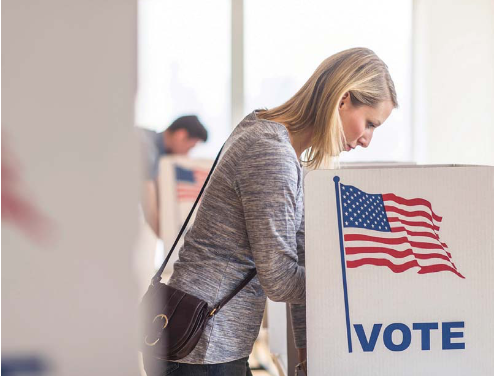
By Sunayana Prabhu
While most candidates expect lackluster midterm election turnout, three towns in the Two River area seem to be experiencing a unique phenomenon this year – the split ticket.
If the numbers hold – and they may not as many races are showing razor-thin margins of victory – voters in Fair Haven, Sea Bright and Atlantic Highlands have chosen one candidate from each slate to represent them on their respective governing bodies next year.
The Two River Times spoke with candidates and analysts to determine whether split tickets reflect the culture of a town or its local leadership. Does it signify a moderate voter base or a polarized one?
Split tickets are becoming “increasingly unusual,” said Jonathan Moschberger, professor of political science at Brookdale Community College. “We see more straight-ticket voting,” he said. “However, in certain instances where the voters are divided themselves, they might split the ticket,” he noted, voting for a candidate from each party when they can’t decide.

Initial tallies from early voting and Election Day machines show a total voter turnout in the county hovering around 30%. That means fewer than a third of registered voters cast a ballot this year
Out of four candidates vying for two council seats in Fair Haven this year, Democrat Michal DiMicelli and Republican Brian Olson, separated by just 11 votes as of press time, are leading. Both candidates are newcomers. The other two candidates, Republican Melissa Lowry and Democrat Neil Blecher, trail by just tens of votes. The final results could change either way in “this unique and special town,” said DiMicelli who is looking forward to working “across the aisle to get things done” if her vote count stands.
Fair Haven “is pretty in the middle,” DiMicelli said. The borough has a higher voter turnout than most towns with more unaffiliated voters than registered Republicans or Democrats, making it “kind of a purple town.”
“It’s less extreme and more that we’re really just a tight-knit community that just cares,” she said.
A similar split-ticket trend is emerging in Sea Bright and Atlantic Highlands this year with midterm voters inclined to support candidates from both parties. In Atlantic Highlands, Republican mayoral candidate James Murphy has received 817 votes to Democrat Lori Hohenleitner’s 807 in a race so close that the leading candidate is still apprehensive about the results. “There is no way of knowing how the mail-ins will affect us,” Murphy said. “They could come in for us or for Lori. Only time will tell.”
For the two open council seats, voters were also split, voting for one Democrat and one Republican, if the tallies hold. Currently, Democrat incumbent Jon Crowley is leading with 830 votes; his running mate Alyson Forbes (809) is out of the second spot by a mere eight votes behind Republican Ellen O’Dwyer-Woods (817). Republican Arthur Whitehead is trailing with 780 votes.
In Sea Bright, Republican John Lamia Jr. got the most votes with 282 but Democratic candidate Mark Leckstein edged out Republican Jeffrey Booker Sr. for the other seat with 272 votes. Booker trails by a little over 50 votes, a margin unlikely to change much in a borough with a small population.
According to a report published in 2016 by the Pew Research Center, there could be three reasons driving the emergence of ticket splitting in general elections: “increased political polarization, self-sorting of population and advantages of incumbency.” Split-ticket districts used to be much more common, the report explains, citing an example from Richard Nixon’s 1972 landslide re- election, when “190 districts that voted for Nixon also elected Democratic representatives; just three, all in Massachusetts, went for both George McGovern and a GOP representative.”
Initial vote counts from early-voting and Election Day machines show a total voter turnout in the county hovering around 30%. That means fewer than a third of registered voters cast a ballot this year. As of press time Wednesday, the Monmouth County Clerk’s Office website showed 492,072 registered voters in 467 districts throughout the county with only 151,999 ballots cast this year.
The article originally appeared in the November 9 – November 15, 2023 print edition of The Two River Times.














